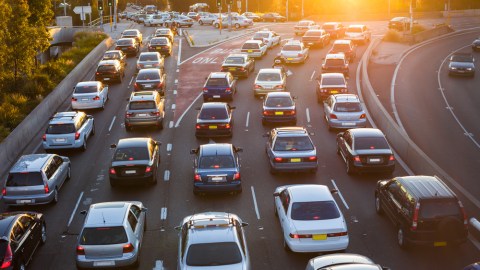We Don’t Have to Wait for Driverless Cars to Fix Traffic

How is most traffic caused?
It’s not from car accidents, as one might expect. Rather, most traffic is the result of extremely subtle changes in the flow of traffic, caused, for instance, be drivers speeding up or slowing down ever so slightly. This has a ripple effect. That is why you have probably noticed traffic mysteriously tightening up or easing up for no apparent reason.
So how can this be fixed. If we take drivers out of the equation, and put computers in charge, that could do wonders to reduce traffic. But we are still a long way off from everyone owning a driverless car.
Many cars, however, do have adaptive cruise-control systems, and an MIT researcher has presented a new algorithm for utilizing these systems to alleviate so-called “traffic flow instabilities.” How does it work?
Sensors would monitor the speed and distance of cars in front of and behind a moving car. If the car maintains an optimum distance between the other cars, it “won’t have to slow down as precipitously if the car in front of it brakes; but it will also be less likely to pass on any unavoidable disruptions to the car behind it.”
Image courtesy of Shutterstock





